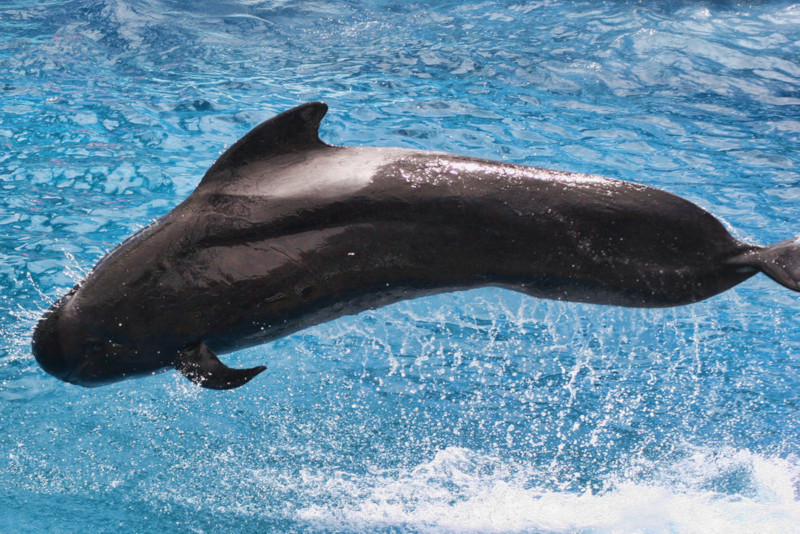
Long-Finned Pilot Whale Facts
- First of all, the descriptive common name Long-Finned Pilot Whale remains rather deceptive. That holds true due to the fact that this marvelous mammal isn’t actually a whale. In fact, the remarkable creature actually represents one of the thirty known species of dolphins inhabiting the oceans of our world.
- Bearing the cumbersome scientific name of Globicephala melas, this marvelous creature remains one of only two species in its genus. The Globicephala macrorhynchus, or Short-Finned Pilot Whale forms the other. Both common names, rather understandably, derive from the length of their pectoral fins.
- Quite fortunately, unlike many related species, the population base of this marvelous animal appears to be stable. However, no recent reliable population surveys exist, leading to a degree of uncertainty pertaining to its exact numbers. Therefore, for the moment, the IUCN lists the species as Data Deficient.
Related Articles
Long-Finned Pilot Whale Physical Description
Most notably, much like many ocean-dwelling mammals, the Long-Finned Pilot Whale exhibits a certain degree of sexual dimorphism. In its case, mature males attain a significantly larger average size than do the females.
Males of this impressive species typically reach overall lengths of about 22 ft (6.7 m). Meanwhile, the smaller females average lengths of roughly 19 ft (5.7 m). Likewise, weights differ even more significantly. Males average 5,070 lb (2,300 kg), while females only average 2,900 lb (1,300 kg).
In appearance, the powerful animal displays a rather bulbous head, compared to other dolphins. It primarily appears either black or dark gray in color. But, markings of light gray or white often appear of the stomach and throat.
However, its over-sized pectoral fins obviously represent its most noticeable physical feature. These serve as the source of its common name. In fact, these appendages can attain lengths equal to as much as 27 percent of the length of the body of the animal.
- Kingdom: Animalia
- Phylum: Chordata
- Class: Mammalia
- Order: Artiodactyla
- Family: Delphinidae
- Genus: Globicephala
- Species: G. melas
Long-Finned Pilot Whale Distribution, Habitat, and Ecology
Currently, the amazing Long-Finned Pilot Whale exists in two known areas of the oceans of the world. Firstly, one comparatively small population appears in the North Atlantic. Estimates place its numbers at around 13,000 individuals.
Secondly, however, the second population, inhabiting much of the Southern Hemisphere, has an estimated population of perhaps 780,000 individuals. But, that large number possibly includes both this species, and the related Short-Finned Pilot Whale. That possibility exists because the two species appear nearly identical.
This beautiful creature generally prefers to inhabit the deeper regions of the ocean. It also appears in the largest numbers in the more temperate parts of its range. Yet it will occasionally move to shallower areas along the coastline, as well as along the continental edge.
In addition, this incredible species appears to be extremely social by nature, even compared to related creatures. It typically travels in large packs, numbering between 20 – 150 individuals. However, groupings of more than 1,000 commonly occur. But, the reason for the largest groupings remains undetermined.
Species Sharing Its Range
Check out our other articles on 4 Fantastically Fascinating Fungi, Golden Pheasant, Lake Kaindy, Bois Dentelle, Lord Howe Island Stick Insect, Loggerhead Sea Turtle

